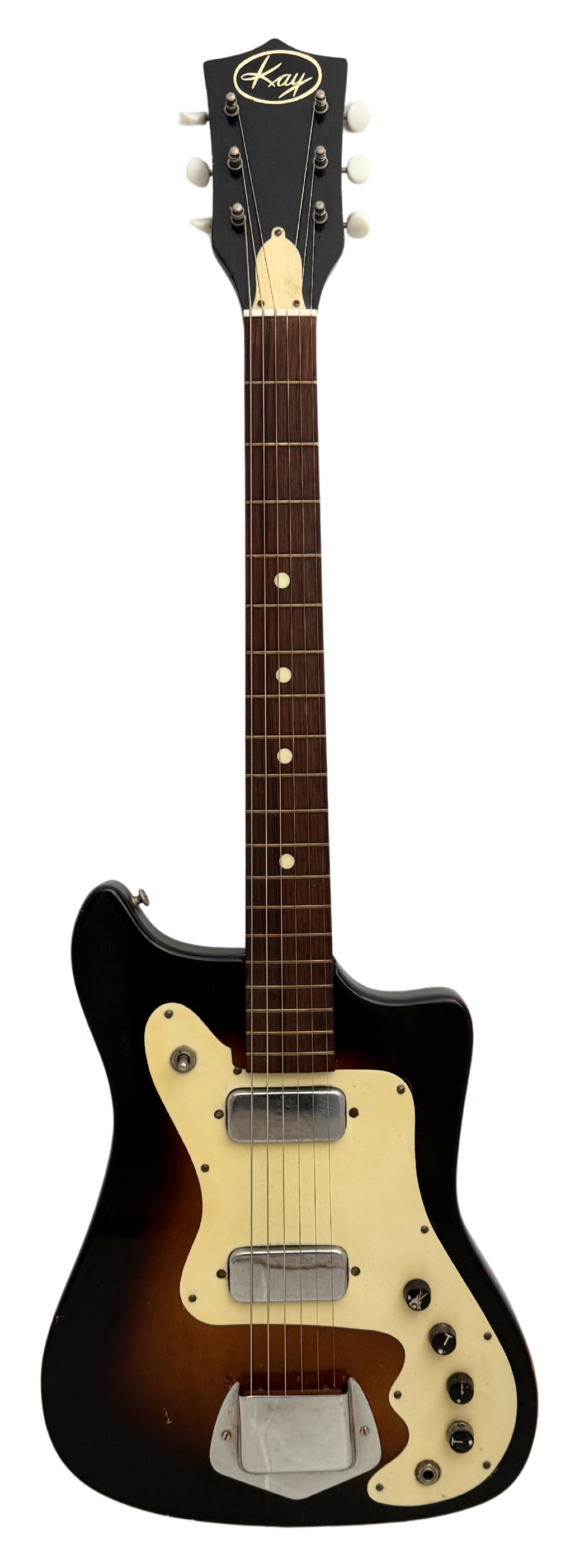Kay Musical Instrument company was started in 1931 in Chicago Illinois and initially manufactured traditional folk instruments such as mandolins, tenor guitars and banjos. They eventually grew to make a wider variety of stringed instruments, including violins, cellos, double basses and several different types of guitars, including electric, classical, lap steel and semi-acoustic models.
In addition to manufacturing instruments for sale under its own brands (like Kay Kraft and Kamico), Kay was also a prolific manufacturer of guitars for retailers across the nation who would order instruments with custom branding to be resold as "house brands” similar to Harmony and Valco.
Kay also made guitar amplifiers, beginning with designs carried over from the old Stromberg company. They eventually subcontracted their amplifier production to Valco, one of their biggest competitors in the 1950s.
Kay had been bought and sold several times over the years. By 1955, they were taken over by Sidney M. Katz. After the acquisition, the product line of Kay was shifted toward electric musical instruments based on demand for that time. In the early 60’s Kay started to face pressure from the Japanese manufacturers and in order to stay competitive they decided to start making solid body electric guitars.
This Kay Vanguard model was released in 1961 and continued through 1966. It’s a striped down, basic design similar to the Telecaster in many ways. Plank body and bolt on neck. It’s a small, lightweight guitar, but it actually has a 25 3/4” scale length. The body and neck are made of poplar with a thick rosewood fretboard and 1 11/16" wide nut. It has a 12” radius fretboard and medium wide, D shaped neck. The neck is attached to the body with 3 bolts. It has a Gibson style headstock with 3 open gear tuners on each side. The bridge and tailpiece are a bit crude, but they work. The bridge is made of rosewood with string groves filed in. Bridge height can be adjusted at the posts. The tailpiece is a small block of metal with a couple of screws holding it down to the body. Both bridge and tailpiece are housed under an “ashtray” style cover.
The Vanguard was offered in single pickup and two pickup variations. Pickups were made by Rowe-DeArmond. The version featured here has a 3-way selector switch, two volume and two tone controls. The pickups are often referred to as Pancake pickups. They sound incredible, producing clear vintage tones at low volume and awesome breakup when pushed. They have an amazing, low-fi but raw bluesy crunch sound to them. The Vanguard was a budget guitar and it definitely plays that way. A good setup and new nut will help playability, but keep in mind that the design is very basic.
These guitars are excellent for slide. Paired with a Fender or Valco tube amp and you can really nail the electric slide tones of Elmore James and Hound Dog Taylor. Kay sold a lot of Vanguards through their department store partnerships and the production numbers were high. They eventually released more sophisticated solid body models like the Vanguard II and others throughout the late 60’s and early 70’s, but these light weight, simply designed early versions are the most fun in my opinion and are the best value.





